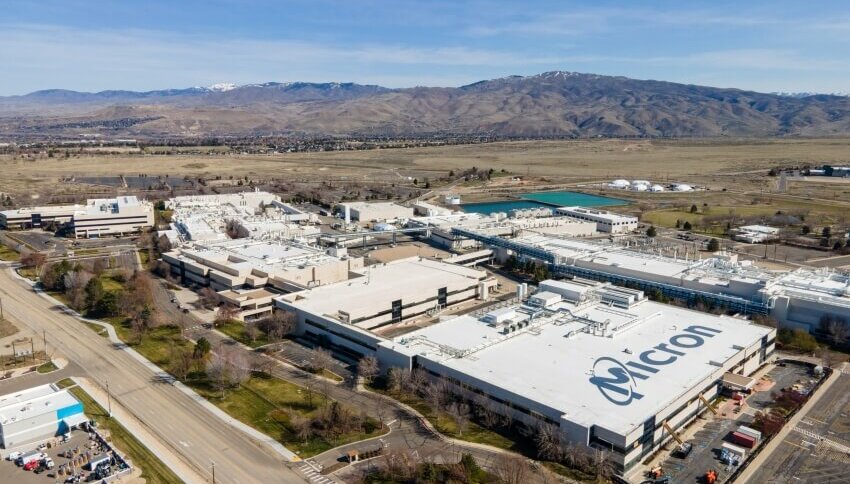Micron to spend US$100b in a New York factory

- Micron Technology plans to invest up to US$100 billion over the next two decades to build what it claims will be the world’s largest semiconductor fabrication facility — and it’ll be located in New York.
- The factory is expected to create nearly 50,000 jobs, with the first phase investment of US$20 billion planned by the end of this decade.
The chip shortage has shone a spotlight on the state of semiconductor manufacturing in the US and how much of it has moved out of the country. The US government grew unhappy with how reliant the country’s economy and military have become on Asian high-tech manufacturing, and ever since then, industry leaders and politicians have been trying to reverse the US’ waning importance in the microprocessor business.
President Joe Biden, after a lengthy back-and-forth, signed the CHIPS and Science Act into law in August, giving US semiconductor makers a US$52.7 billion push over five years to ramp up processor manufacturing. Ever since then, the semiconductor market in the US has peaked in activity, with many local and international chip players nearshoring their production in the US to cater to domestic demand.
The most recent of those nearshoring companies in the semiconductor space is Micron Technology, a leading US-based memory chipmaker that unveiled its plans to invest up to US$100 billion over the next 20-plus years to build a computer chip factory complex in upstate New York. Micron said the project will result in the world’s largest semiconductor fabrication facility, all in an effort to boost domestic manufacturing capabilities.
The move by Micron comes just two months after it announced its plans to invest US$40 billion through the end of the decade to build memory manufacturing in multiple phases in the US. The CHIPS and Science Act of 2022 was put in place to encourage semiconductor companies to build and expand computer chip factories in the country.
“There is no doubt that without the CHIPS Act, we would not be here today,” said Micron’s chief executive Sanjay Mehrotra. The legislation, and favorable tax treatment and partnerships with state governments like New York’s, are key ingredients needed to match the subsidies offered by Asian nations and “bring chip-making back to America,” Mehrotra added.
The giant factory will be built in Clay, New York and Micron said site preparation would begin next year, with construction throughout 2024 and production in volume after 2025. Over the next 20 years, Micron said, the project will generate nearly 50,000 jobs — around 9,000 Micron employees and more than 40,000 jobs for suppliers, contractors and others. What amount of federal monetary support that will flow to the project is still uncertain, as companies cannot apply for that federal backing until next year, since the CHIPS Act passed only a couple of months ago.
Other semiconductor nearshoring efforts besides Micron
Micron joins other major chipmakers in expanding operations in the US. Before the CHIPS legislation was passed, Intel, banking on investment incentives, announced its plan to invest US$20 billion on two chip fabrication plants near Columbus, Ohio, back in January. The new “megafab” site could eventually house eight Intel fabs, costing US$100 billion in total.
Then in August, Intel and Canada’s Brookfield Asset Management agreed to jointly fund up to US$30 billion for chip factories in Arizona. Back in late 2021, Samsung had said it would build a US$17 billion plant in Texas. It later raised the possibility of adding several more in the state with a total long-term investment of nearly US$200 billion — higher than both Intel and Micron.
Even Taiwan Semiconductor Manufacturing Company (TSMC) announced in 2020 that it would construct a US$12 billion factory in Arizona. In an update in August this year, Arizona’s State Governor Doug Ducey said the construction of the main chip facility was complete. The plant is expected to fabricate some of Apple’s A-series and M-series chips.
TSMC however has spoken about the hurdles of nearshoring in the US. Chairman Mark Liu told shareholders this year that the price tag for its Arizona plant was likely to go higher, in part because the US lacked the rich ecosystem of suppliers and the large pool of skilled workers that had developed around TSMC, (the world’s largest chip maker), in Taiwan.









